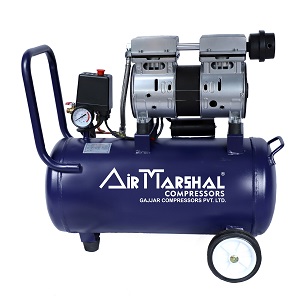Air compressors are essential tools in various industries, from automotive workshops and construction sites to manufacturing facilities and even home garages. These versatile machines generate compressed air for a wide range of applications, such as powering pneumatic tools, inflating tires, and even providing clean, dry air for spray painting. To ensure the efficient and safe operation of your air compressor, it's crucial to understand its various parts and accessories. In this comprehensive guide, we will explore the key components and accessories that make air compressors function effectively.
I. Key Components of an Air Compressor
Power Source: Air compressors can be powered by
electricity, gasoline, or diesel engines. The choice of power source depends on
the specific application and portability requirements.
Compressor Pump: The compressor pump is the heart of the
air compressor. It draws in atmospheric air and compresses it into a smaller
volume. There are two main types of compressor pumps: reciprocating (piston)
and rotary screw. Each has its advantages and is suited for different tasks.
Tank: Air compressors typically have a storage tank, also
known as an air receiver, where compressed air is stored before it's used. The
tank helps maintain a consistent air supply and reduces the workload on the
compressor pump.
Pressure Regulator: A pressure regulator allows you to
adjust the output pressure of the compressed air to match the requirements of
your tools or equipment. It ensures a safe and controlled working environment.
Safety Valves: These valves are essential for preventing
over-pressurization of the tank. They release excess pressure to maintain a
safe working level.
II. Accessories for Air Compressors
Air Hose: An air hose connects the compressor to your
pneumatic tools or other devices. It's important to choose the right hose size
and length to minimize pressure drop and maximize efficiency.
Air Filters: Air filters are crucial for ensuring that the
compressed air is clean and free from contaminants. They protect both your
tools and the compressor itself from damage.
Air Dryers: In applications where moisture can be
detrimental, such as spray painting or precision machining, air dryers remove
moisture from the compressed air to prevent corrosion and ensure consistent
performance.
Oil Lubrication Systems: For reciprocating compressors, oil
lubrication systems are necessary to keep the compressor pump running smoothly
and extend its lifespan.
Compressor Oil: Regularly changing and monitoring the
compressor oil is essential to prevent wear and maintain optimal performance in
oil-lubricated compressors.
Pressure Gauges: These gauges display the tank pressure and
the pressure at the outlet, allowing you to monitor the compressor's
performance and adjust settings as needed.
Fittings and Connectors: These components help you adapt
your air compressor to various tools and accessories. There are different types
of fittings, such as couplers, plugs, and reducers, to suit different
applications.
Air Compressor Maintenance Kits: These kits typically
include essential items like replacement air filters, compressor oil, and
gaskets, making it easier to perform routine maintenance.
III. Choosing the Right Parts and Accessories
When selecting parts and accessories for your air
compressor, consider the following factors:
Application: Different applications may require specific
accessories. For instance, sandblasting may demand a larger compressor and
moisture removal system than simple tire inflation.
Compressor Type: Make sure the parts and accessories are
compatible with the type of compressor you have, whether it's reciprocating or
rotary screw.
Quality and Brand: Invest in high-quality parts and
accessories from reputable brands to ensure reliability and longevity.
Maintenance: Regularly maintain and inspect your air
compressor and its components to ensure they function optimally and last
longer.
Understanding the various parts and accessories of an air
compressor is essential for efficient and safe operation. By selecting the
right components and performing regular maintenance, you can maximize the
lifespan and performance of your air compressor, making it a valuable asset in
your workspace or garage. Whether you're a professional tradesperson or a enthusiast,
a well-maintained air compressor will continue to serve you reliably for years
to come.





